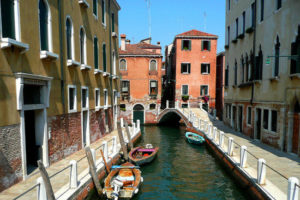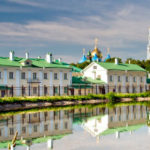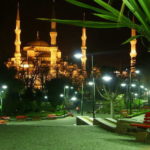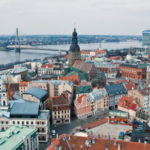Interesting facts about Venice
 The world famous Italian city of Venice became famous for its uniqueness. Instead of streets there are canals, and houses grow right out of the water! Where else is such an amazing atmosphere? In addition, the whole city resembles a huge open-air museum – architecture, ancient buildings, museums, which store priceless works of art … It is not surprising that millions of tourists come here every year.
The world famous Italian city of Venice became famous for its uniqueness. Instead of streets there are canals, and houses grow right out of the water! Where else is such an amazing atmosphere? In addition, the whole city resembles a huge open-air museum – architecture, ancient buildings, museums, which store priceless works of art … It is not surprising that millions of tourists come here every year.
The most beautiful and most visited part of the city is its historical center. It is located on 118 islands, separated by about 170 channels and connected by four hundred bridges.
Venice gondolas are always exactly 425, no more and no less. That is the ruling of the gondolier association. This job is not easy, but very profitable, so the license of the gondolier costs a lot of money.
All Venetian gondolas are built on the same principle – 11 meters long and 140 centimeters wide. They accommodate six passengers and the gondolier itself.
The least preferred months to visit Venice are November and December, as the water level often rises at this time, and the city is partially flooded.
Published in the beginning of the 18th century, the Venice guidebook of the famous Antonio Vivaldi and his father are mentioned as the best violinists in the city.
There is no sewage system; all waste is washed directly into the canals. Therefore, plumbers are not here either, since they would have nothing to do here. That is why in the heat of the channels often smacks, and not tulips.
Venice has a small suburb located on the mainland – Mestra.
Finding a public toilet in Venice is not a trivial task, since there are almost no ones here. And those that are, cost a half to two euros.
Licenses of gondoliers are inherited, from father to son.
The first woman in the ranks of the Venetian gondoliers appeared only in 2009 – before this profession was purely male.
In Venice, there are no cars or buses. The role of affordable public transport here is performed by water buses, such as the Russian “river tram”.
Venice is the most expensive city in Italy.
Regular customers in local cafes almost always make good discounts. However, this does not shine for tourists, because only locals who regularly visit the same places are considered to be regular clients.
Instead of fire engines there are fire boats. Moreover, there may be problems with fires here, since with the exception of the most extreme cases of sea water, firefighters are prohibited. The salt contained in it spoils the building.
The Latin American country Venezuela, discovered by navigator Amerigo Vespucci, was named after Venice, because the Indian houses on stilts reminded the pioneers of this city.
During its history, Venice was rebuilt twice, as under its weight the city slowly goes under water. In order to reduce the rate of flooding, even special offshore structures have been built, preventing the tide from rising too high. However, scientists agree that in the coming decades, Venice will become uninhabitable, and in a little over a hundred years it will disappear completely under water.
There is only one graveyard. Once in seven years, the remains of the Venetians buried there are exhumed and transferred to a special columbarium to make room in the cemetery.
Every year, this garden is visited by 17-18 million people, which is dozens of times more than the number of Venetians themselves.
Here was born the famous merchant and traveler Marco Polo, who gave the world a lot of geographical discoveries.
The Grand Canal, the longest canal in Venice, is four kilometers long.
Bicycles here are strictly prohibited. An exception is made only for children.
Many local houses stand on stilts made of Siberian larch. This tree is preferred because it does not spoil in salt water for a very long time.
In the Middle Ages in Venice, ladies preferred to have white hair, as in the pictures. Since the hair color was not yet there, they bleached them with horse urine.
In the 17th century, a terrible plague epidemic killed more than a third of the entire population of the city.
The famous Venetian church of Santa Maria della Salute stands on about one hundred thousand wooden piles. In total, during its construction about a million wooden beams were used.



























